Ferry Dawn


“My first memory of the Dawn was boarding it with my mother, sister and brother on the 8:15 trip and having the passengers (everyone knew everyone) remarking how competent my mother was to get three youngsters ready and make the early boat to town…”
“The Dawn’s schedule was a 7:05 am trip, an 8:15am, 10 am, (for the housewives), one around Noon. These times were from the west side of the lake. There may have been one at 2 pm, but I know there was a 4 pm (for the High School clientele) one at 5:30 pm and one at 6:30 pm; If you missed that one, the next and last was 11:45 pm. These times were when they left Leschi. The nice thing about the crew was, though the boat had started to back out if they saw someone running down the steps at Leschi, they would reverse their engines and come back to the dock. I have known the steamer Dawn to re-dock as many as four times…”
“One of the things we did when we were old enough to swim without parental supervision, was to climb on the Dawn when it docked and dive or jump off the top rail. Seeing as the propeller was in the back it was necessary to jump or dive out. Missing the propeller meant one lived longer. Not all appreciated our show of dare-devilishness. Once in a while we dripped a little…”

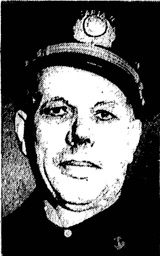
“The boiler in the Dawn (steam), which was where one tried to sit when it was cold, exploded once or twice, but no one was ever injured…”
“The demise of the Dawn I’m not sure about. A hazy recollection is that it sank at its dock (after the ferry to Mercer Island took over). Then, I believe, it was resurrected…”
The Steamer Dawn and Me
By Madelon Moore Konker
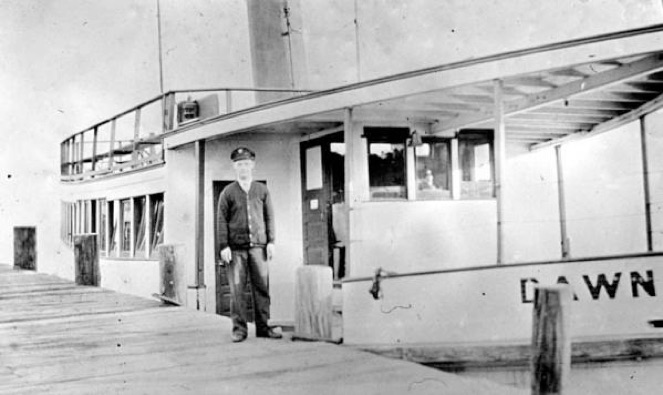
The “Queen of the Lake” for which the 65 foot long (reported to be 55 feet long when she retired) Dawn was nicknamed, was built in Houghton (present day Kirkland, WA) in 1913. She was built at the Lake Washington Shipyard

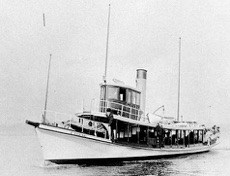
Traveling to Europe, Captain Anderson inspected several boats of worthy design and felt many were suitable designs for the increasing passenger traffic on the Mercer Island run. The Dawn, when finished, carried 250 passengers, had no lifeboats, and could be operated by a crew of one or two. She was of such short length and squat beam, streamlining her was impossible, so she was constructed with a squared off stern. the squat vessel was powered by a small steeple-compound steam engine (2 cylinders-double compound) and it pushed the 75 ton Dawn through the water at a pretty good speed. The steam engine was very powerful for its size.
“The inside of the Dawn was divided,” stated Virginia Ogden Elliot in the Mercer Island Reporter, “into three parts.” “The engine room was for the men, the inside cabin for the women, children, and transient travelers, while the outside and upper decks for the teenagers.” The engine room had around both sides of the engine, benches for the men, and this was the smoking section of the boat. A lot of the affairs of the island were settled in that engine room. Local men would pretty much have their own assigned seat, and if an outsider would poach a seat, they’d all stare or glare at him till he moved to another seat. Behind the hooded broiler in the warmest spot sat the crowded teenagers when not on the outside deck. They took the Dawn to Franklin High School, and Garfield High School, both in Seattle.

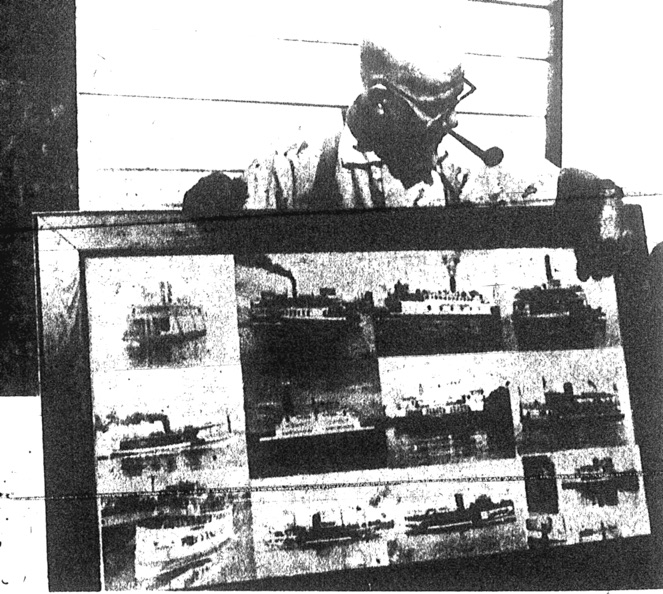
The fare for a ride on the impressive little steamer was 25 cents a round trip, but steady commuters could purchase a ten trip ticket for 1 dollar. Students got 20 trips for 1 dollar! Commuters and students alike would do whatever it took to catch the early boat. At times, folks could be seen running down to the dock in various stages of undress, scrambling to not miss their transport. While they finished changing on board, the housewives would run down to the then abandoned dock and collect the left behind articles of clothing, coffee cups, breakfast dishes, and anything else left behind. There was even a shoe rack on board, for the “mud shoes” that passengers wore instead of their “city shoes” and kept there until their return journey back home.
The Dawn had her share of mishaps as well. On Christmas Eve 1924, in an 80 mile an hour wind, the Dawn broke free of her moorings and whipped and smashed against the pilings. Creating a hole in the side of her bruised hull, the Dawn settled under the waves. She was then raised, repaired and employed for more work. As if being tested by fate once again, the Dawn and a lone seaplane collided in dense fog some years later, no one was severely injured. Yet another time the Dawn missed her terminal at Proctor Dock altogether and instead visited a quiet, unfamiliar private dock.

The Dawn continued her faithful service until 1938 when she was replaced by the new steamer Mercer.
Captain Gilbert reminisces about one stormy night, “…All through the evening, when all other ferries were docked, the faithful Dawn kept her course…” “…Now though, she is worn out, she’s so patched up you can’t hardly find any of the original ship left…”
The tired Dawn was moored at a Rainier Beach Dock after her retirement, where she once again sank, partially this time, at her moorings.
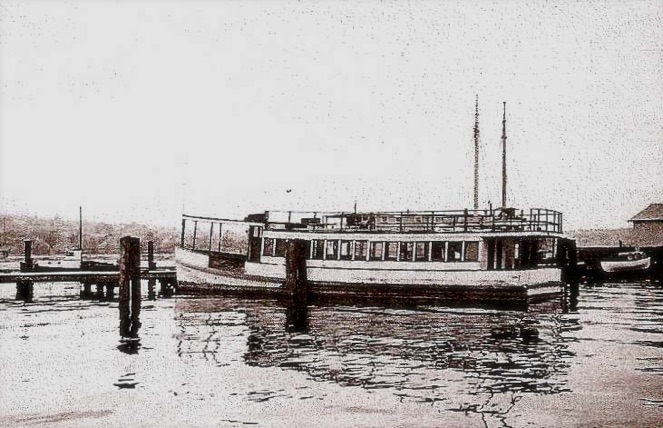
Enticing as a play spot for local children, but posing as a potential hazard to them, the Seattle City Council requested that she be sunk. Charlie Gilbert of the Vasten was given the contract, and she was towed out and sunk. She now lies in over 100 feet of water east of Atlantic City Park.
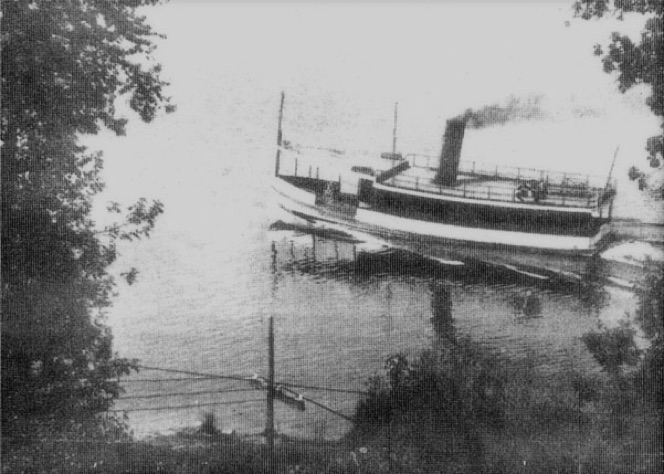
Dawn



-
-Home
Excellent video footage below shot by Brian Wiederspan and Jeanna Edgerton of Frog Kick Diving. Courtesy Brian Wiederspan
